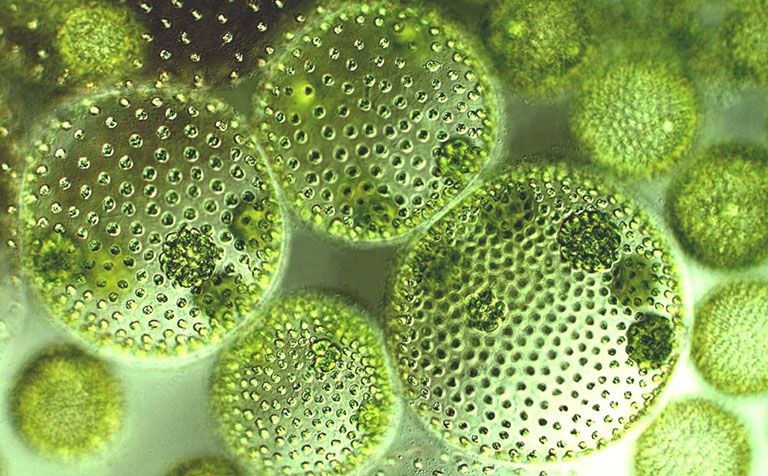Cambridge University researchers claim that a new two-cell bio-photovoltaics that utilizes algae cells represents a big step forward in the search for cleaner energy.
Scientists at the famous university began their research on the basis that, during photosynthesis, algae produces electrons. Some of these electrons are exported outside the cells where they can provide electric current. The bio-photovoltaic (BPV) cells that the scientists have developed utilize the photosynthetic properties of these micro-organisms to convert light into electric current.
What differentiates this research from previous findings, the researchers say, is that where before all the BPV cells located charging and power delivery in a single compartment, the scientists have managed to develop a two-chamber BPV system, where the two core processes involved in the operation of a solar cell are separated.
“Charging and power delivery often have conflicting requirements,” explains Kadi Liis Saar, of the Department of Chemistry. “For example, the charging unit needs to be exposed to sunlight to allow efficient charging, whereas the power delivery part does not require exposure to light but should be effective at converting the electrons to current with minimal losses.”
The construction of a two-chamber system permitted the researchers to design the two units independently and, through this, optimize the performance of the two processes at the same time.
“Separating out charging and power delivery meant we were able to enhance the performance of the power delivery unit through miniaturization,” explains Tuomas Knowles from the Department of Chemistry and the Cavendish Laboratory. “At miniature scales, fluids behave very differently, enabling us to design cells that are more efficient, with lower internal resistance and decreased electrical losses.”
The researchers used genetically modified algae to carry mutations that enable the cells to minimize the amount of electric charge dissipated non-productively during the photosynthesis process.
This new design allows the team to build a BPV cell with a power density of 0.5W/m2, five times that of their previous design. This is, however, still only a tenth of the power provided by conventional solar fuel cells, but still provides new attractive features for BPV cells.
Popular content
“While conventional silicon-based solar cells are more efficient than algae-powered cells in the fraction of the sun’s energy they turn to electrical energy, there are attractive possibilities with other types of materials,” says Christopher Howe from the Department of Biochemistry. “In particular, because algae grow and divide naturally, systems based on them may require less energy investment and can be produced in a decentralised fashion.”
Furthermore, separating the energy generation means that the charge can be stored rather than having to be used immediately, meaning that energy could be generated during the day and used at night.
The scientists emphasize that while this system would not be powerful enough to fuel a grid system, it could be particularly useful in rural areas in, say, Africa, where sunlight is abundant and where in regions where ther is no existing electric grid system.
Moreover, the production of BPVs can be carried out directly by the local community, in contrast to semiconductor-based photovoltaics.
“This a big step forward in the search for alternative, greener fuels,” says Paolo Bombelli from the Department of Biochemistry. “We believe these developments will bring algal-based systems closer to practical implementation.”
The research was supported by the Leverhulme Trust, the Engineering and Physical Sciences Research Council and the European Research Council.
This content is protected by copyright and may not be reused. If you want to cooperate with us and would like to reuse some of our content, please contact: editors@pv-magazine.com.


1 comment
By submitting this form you agree to pv magazine using your data for the purposes of publishing your comment.
Your personal data will only be disclosed or otherwise transmitted to third parties for the purposes of spam filtering or if this is necessary for technical maintenance of the website. Any other transfer to third parties will not take place unless this is justified on the basis of applicable data protection regulations or if pv magazine is legally obliged to do so.
You may revoke this consent at any time with effect for the future, in which case your personal data will be deleted immediately. Otherwise, your data will be deleted if pv magazine has processed your request or the purpose of data storage is fulfilled.
Further information on data privacy can be found in our Data Protection Policy.